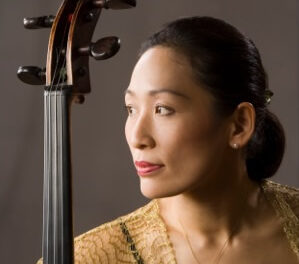Music Director Christopher Warren-Green chose the monumental Missa Solemnis in D, Op. 123 of Ludwig van Beethoven (1770-1827) to end the Charlotte Symphony’s 2011-12 Season. In addition to a fine, evenly matched quartet of soloists, the large and well-prepared Oratorio Singers of Charlotte were used to wrestle with the composer’s challenging instrumental-style writing for voices. This is the 60th anniversary year for the Oratorio Singers currently led by Robert Frazier.* They have performed this work four times since their founding in 1951-52. They were very well prepared on this outing. Warren-Green’s team of soloists was soprano Tamara Wilson, mezzo-soprano Nancy Maultsby, tenor Yeghishe Manucharyan, and baritone Richard Zeller.
Beethoven’s Missa Solemnis dates from the composer’s “Late Period.” Its impetus was the appointment of Rudolf, Archduke of Austria and the youngest son of Emperor Leopold II, as Archbishop of Olmütz in Moravia (now Olomouc, the Czech Republic). The work was only completed three years after Rudolf’s installation. The composer sought to reconcile the church music style with the style of concert music. The work lasts just under ninety minutes and sets five sections of the Catholic mass; Kyrie, Gloria, Credo, Sanctus, and Agnus Dei. Instead of each section of the mass being given over entirely to soloists, chorus, or orchestra, Beethoven, according to Melvin Berger in Guide to Choral Masterpieces, “effortlessly and seamlessly interweaves the three groups.” A constant characteristic throughout the work is how Beethoven juxtaposes unexpected changes from very loud to softly floated pianissimos and other sharp contrasts.
Belk Theater was well filled and its audience listened with rapt attention as Warren-Green led a strong, tightly focused performance. All sections of the Charlotte Symphony played well and were carefully balanced with both the solo quartet and the 150 member Oratorio Singers. The conductors’ control of rhythm in both the choir and orchestra was exceptional and rewarding. The brass sections played with a wide palette of color and dynamics with some especially subtle work from the horns and trumpets. The woodwinds were excellent with some fine solos from flutes, bassoons, and contrabassoon. The strings, arranged with violin sections divided on either side of the conductor, played with precise ensemble and good, full tone. Concertmaster Calin Ovidiu Lupanu played the extended violin solo which begins after the orchestra prelude and accompanies the Benedictus portion of the Sanctus beautifully. Peyton Becton’s stylish and subtle playing of the timpani** throughout the work was a constant pleasure.
Beethoven’s scoring for high notes held no fear for the outstanding soprano Tamara Wilson and warm toned tenor Yeghishe Manucharyan. Wilson soared seamlessly to the heights and both she and the tenor readily projected over the orchestra. Nancy Maultsby’s rich mezzo-soprano was a constant asset as was the rock solid baritone of Richard Zeller whose voice was darker and richer than the term “Baritone” usually implies. The diction of the quartet was excellent and could be easily followed in the text insert in the program. (Thanks for leaving the house lights up during the performance.)
The women of the Oratorio Singers sandwiched the men between them as they were arrayed behind the orchestra. The choir’s diction was superb and the rhythm of their singing was splendid, the outstanding Gloria coming to mind. Their instant response to Beethoven’s abrupt contrasts of dynamics was sometimes breathtaking as in the repeated “Adoramus te” in the Gloria. The men’s clear, hushed “Te incarnatus est de Spiritu Sancto” in the Credo was memorable. This was a richly satisfying performance of one of the most challenging works in the repertoire.
*With thanks to one of the choristers, the Oratorio Singer’s director is Scott Allen Jarrett. Robert Frazier is [the] accompanist and Asst. Director. Director Jarrett prepared the chorus for the Beethoven. **Also, the tympanist was Leonardo Soto!











